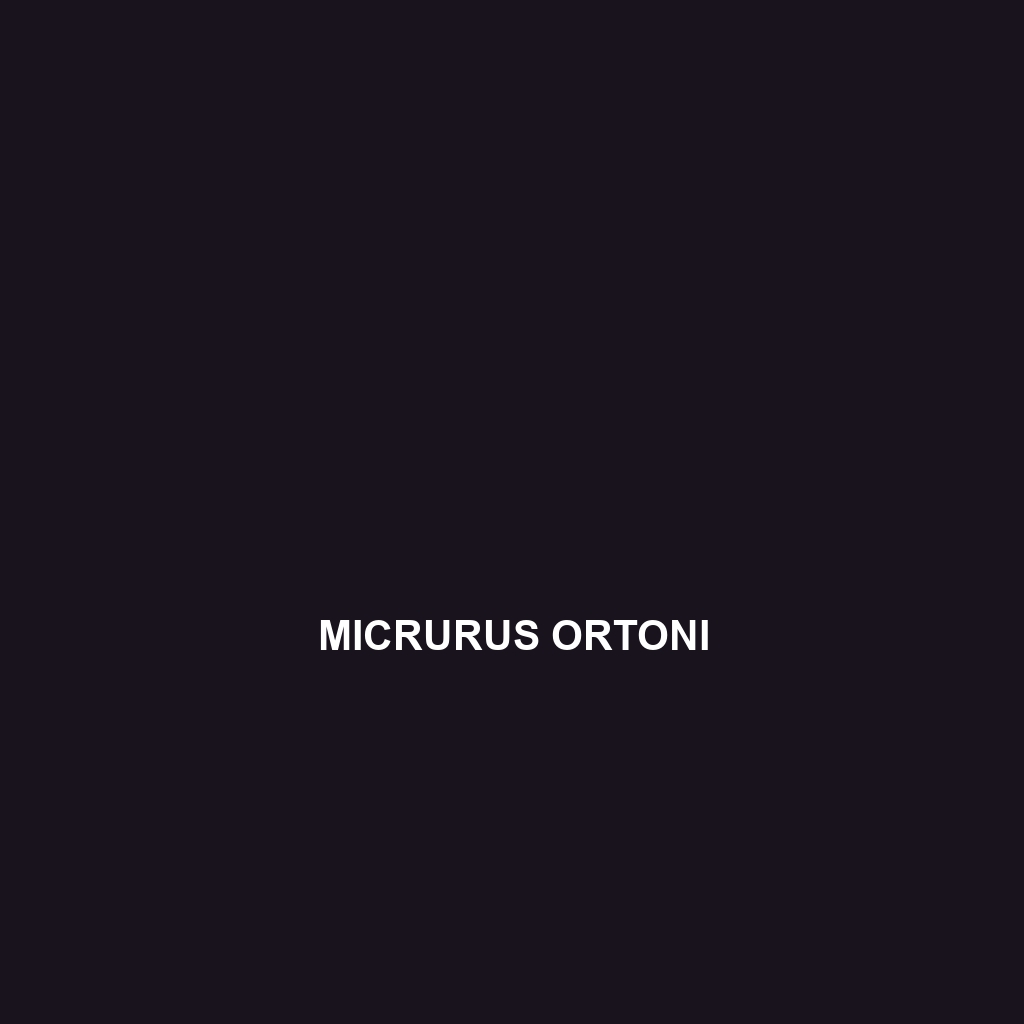Common Name
Micrurus ortoni
Scientific Name
Micrurus ortoni
Habitat
The Micrurus ortoni, commonly known as Ortone’s coral snake, is primarily found in tropical regions of South America. Its preferred habitats include lush rainforests, humid tropical areas, and occasionally savannas where the dense vegetation provides ample cover. These snakes are often located in regions characterized by warm climates and high humidity, particularly in countries like Brazil and Peru. The paradox of the Micrurus ortoni‘s habitat is its ability to thrive in both the dense underbrush of rainforests and the drier, open spaces of savannas, making it a versatile species within its environmental niche.
Physical Characteristics
The Micrurus ortoni displays a striking appearance, which serves as a warning to potential predators. These coral snakes typically grow to an average length of 60 to 90 centimeters (about 24 to 35 inches). They have a slender body shape adorned with vibrant coloration, primarily featuring bands of red, black, and yellow that alternate along its length. This distinctive coloration is not just for show; it plays a critical role in warning potential threats of their venomous nature. Unique morphological features include a small, elongated head and a smooth scale texture, which enhances their camouflage among foliage.
Behavior
Micrurus ortoni is primarily a nocturnal species, emerging at night to hunt for prey. They are known for their cryptic behavior, often remaining motionless for extended durations to avoid detection by predators and humans alike. During the mating season, which typically occurs in the warmer months, males display aggressive behaviors, including combat rituals to establish dominance. These interactions can be fascinating to observe and reflect their complex social structure. Overall, their nocturnal nature and elusive behavior contribute to the challenges in studying their ecology and life cycle.
Diet
The diet of Micrurus ortoni consists mainly of small reptiles and amphibians, illustrating its status as a carnivorous predator. This snake hunts efficiently by using its keen sense of smell and excellent camouflage, allowing it to ambush unsuspecting prey. While it primarily targets smaller snakes and lizards, it may also consume various types of amphibians present in its habitat. The venomous bite of the Micrurus ortoni is highly effective in subduing prey quickly, facilitating efficient feeding patterns essential for its survival.
Reproduction
The reproductive cycle of Micrurus ortoni is fascinating and involves specific behavioral patterns. Mating typically occurs during the spring and summer months, coinciding with periods of increased prey availability. After a gestation period of approximately two to three months, females give birth to live young rather than laying eggs, which is characteristic of many coral snake species. Offspring are born fully formed and exhibit a similar coloration pattern to adults, allowing them to blend into their environment from birth. Maternal care is minimal post-birth, as young snakes quickly become independent.
Conservation Status
The conservation status of Micrurus ortoni has raised concerns among herpetologists and conservationists. It is currently classified as ‘vulnerable’ due to habitat loss from deforestation, agricultural expansion, and urban development. These environmental pressures pose significant threats to their populations in the wild. Conservation efforts are essential to maintain their natural habitats and educate populations about the ecological importance of preserving this beautiful species.
Interesting Facts
Micrurus ortoni possesses some fascinating traits that capture the interest of researchers and snake enthusiasts alike. One notable aspect is its unique defense mechanism, which includes playing dead when threatened. This behavior may deter potential predators by suggesting that the snake is no longer a viable target. Additionally, the striking coloration of Micrurus ortoni serves not just for camouflage but also forms a crucial deterring mechanism due to its warning sign of venom toxicity. Understanding these behaviors enriches the knowledge surrounding this remarkable species.
Role in Ecosystem
Micrurus ortoni plays a significant role in its ecosystem as both a predator and prey species. As a predator, it helps control the populations of small reptiles and amphibians, maintaining balanced ecological interactions. Conversely, it serves as prey for larger carnivores, contributing to the food web’s complexity. By fulfilling these roles, Micrurus ortoni aids in keeping the ecosystem healthy and functioning effectively. Its existence highlights the intricate relationships that underpin biodiversity and the importance of conserving such species for overall ecological stability.
